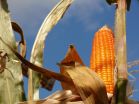Penn Medicine study finds tongue fat and size may predict sleep apnea in obese adults
Data reveals patients with fatter tongues suffer more severe sleep apnea
2014-10-06
(Press-News.org) Obesity is a risk factor for many health problems, but a new Penn Medicine study published this month in the journal Sleep suggests having a larger tongue with increased levels of fat may be a sign of obstructive sleep apnea (OSA) in obese adults.
The researchers examined tongue fat in 31 obese adults who had OSA and 90 obese adults without the condition. All subjects underwent magnetic resonance imaging and the size and distribution of upper airway fat deposits in their tongue and upper airway muscles measured.
"Previous studies showed that the human tongue has a high percentage of fat, and that tongue fat and tongue weight were positively correlated with the degree of obesity," said study senior author Richard J. Schwab, MD, professor of Medicine in Penn's Perelman School of Medicine and member of the Center for Sleep and Circadian Neurobiology. "This is the first study that examined OSA patients and found higher fat deposits in obstructive sleep apnea patients than in those without OSA."
The data also showed a correlation between tongue fat volume and sleep apnea severity, and with body mass index. The researchers believe that increased tongue fat may explain the pathogenic relationship between obesity and sleep apnea.
Adults with a body mass index of 30 or higher are considered obese. The latest Centers for Disease Control and Prevention survey of nationally representative data in 2011 and 2012 reported that nearly 35 percent of U.S. adults – 78.6 million people – are obese. OSA affects more than 15 million adult Americans. The number of OSA cases is rising, mirroring the increasing weight of the average individual.
Although obesity is the strongest risk factor for development of OSA, the ways that obesity confers risk for OSA are unknown. The researchers believe the increase in fat not only increases tongue size, but also decreases tongue force and hinders the tongue from properly functioning as an upper airway dilator muscle, which can lead to apneas during sleep.
Study authors note that further studies are needed to determine if weight loss decreases tongue fat, and whether improvements in sleep-disordered breathing are associated with changes in tongue fat.
INFORMATION:
Other Penn coauthors are Andrew M. Kim, Brendan T. Keenan, Nicholas Jackson, Eugenia L. Chan, Bethany Staley, Harish Poptani, Drew A. Torigian, and Allan I. Pack.
The study was supported by funding from the National Institutes of Health (R01HL089447 and P01HL094307). For more information, see the American Academy of Sleep Medicine press release.
ELSE PRESS RELEASES FROM THIS DATE:
2014-10-06
A University of Texas at Arlington team exploring how neuron growth can be controlled in the lab and, possibly, in the human body has published a new paper in Nature Scientific Reports on how fluid flow could play a significant role.
In a new study co-authored by Samarendra Mohanty, leader of the Biophysics and Physiology Lab in the College of Science, the researchers were able to use microfluidic stimulations to change the path of an axon at an angle of up to 90 degrees. Axons are the shafts of neurons, on the tips of which connections are made with other neurons or cells. ...
2014-10-06
URBANA, Ill. – Hardly a day passes without pundits crying for leadership in the NFL commissioner and team owners, among high-ranking government officials, and in other public figures. If University of Illinois experts didn't have evidence that this valuable trait can be taught, they might join the collective swoon that's engulfing much of the country.
But a new U of I study supports the idea that leaders are made, not born, and that leadership development follows a specific progression.
Past research suggests that leadership is 30 percent genetic and 70 percent a result ...
2014-10-06
WEST LAFAYETTE, Ind. - Purdue researchers have identified a set of genes that can be used to naturally boost the provitamin A content of corn kernels, a finding that could help combat vitamin A deficiency in developing countries and macular degeneration in the elderly.
Professor of agronomy Torbert Rocheford and fellow researchers found gene variations that can be selected to change nutritionally poor white corn into biofortified orange corn with high levels of provitamin A carotenoids - substances that the human body can convert into vitamin A. Vitamin A plays key roles ...
2014-10-06
NEW YORK (October 6, 2014) – Investigators at The Children's Hospital at Montefiore (CHAM) and Albert Einstein College of Medicine of Yeshiva University will present their latest research on neonatal lung disease, reducing wrong-patient errors in the NICU, hormonal contraception and more at the AAP Experience, the National Conference & Exhibition of the American Academy of Pediatrics. The AAP Experience will take place October 11-14 in San Diego, California.
Judy Aschner, M.D., F.A.A.P., physician-in-chief, CHAM, professor of pediatrics and Michael I. Cohen, M.D., University ...
2014-10-06
Hamilton, ON (October 6, 2014) – A research study out of McMaster University has found that only 40 per cent of Canadians exercise to cope with stress.
The researchers analyzed data from Statistics Canada's Canadian Community Health Survey of nearly 40,000 Canadians 15 and older. Of 13 coping behaviours or strategies polled, exercise was ranked eighth, meaning people were more likely to cope with stress by problem-solving; looking on the bright side, trying to relax, talking to others, blaming oneself, ignoring stress or praying, rather than being active.
"We know ...
2014-10-06
AUGUSTA, Ga. - The initial motivation was to estimate the age structure of a fruit fly population, the result a fundamental theorem that can help determine the age distribution of essentially any group.
This emerging theorem on stationary populations shows that you can determine the age distribution of a population by looking at how long they still have to live.
The mathematical discovery can help produce data with a wide range of implications, from predicting rates of infectious diseases, such as West Nile virus spread by mosquitoes, to anticipating the health care ...
2014-10-06
WASHINGTON, Oct. 6, 2014— Melanoma is the fifth most common cancer type in the United States, and it's also the deadliest form of skin cancer, causing more than 75 percent of skin-cancer deaths. If caught early enough though, it is almost always curable. Now a camera, capable of taking snapshots of the entire human body and rendering high-resolution images of a patient's skin may help doctors spot cancer early and save lives.
Developed by a team of researchers at Duke University in North Carolina, USA, the "gigapixel whole-body photographic camera" is essentially three ...
2014-10-06
Many US patients with liver cancer—even those with early stage disease that can often be cured—do not receive treatment for their disease, according to an analysis of studies published between 1989 and 2013.
Less than one fourth of patients undergo curative treatment, and nearly 50% do not receive any treatment. Elderly, non-Caucasians and patients of low socioeconomic status had lower treatment rates than their counterparts.
"We found the low treatment rates among patients with early stage tumors particularly concerning. Many of these patients currently fail to receive ...
2014-10-06
Vitamin D deficiency is linked with advanced stages of liver cancer and may be an indicator of a poor prognosis, according to a study of 200 patients with the disease who were followed for an average of 46 weeks.
Blood levels of vitamin D negatively correlated with stages of the disease, and patients with severe vitamin D deficiency had more than a 2-fold increased risk of dying during the study, according to Dr. Oliver Waidmann, senior author of the Alimentary Pharmacology and Therapeutics study.
INFORMATION:
...
2014-10-06
A new phase 1 safety trial has demonstrated that idarubicin-loaded beads are well tolerated by patients but are toxic to liver cancer cells. Idarubicin is an anthracycline that is currently used to treat leukemias.
Two months into the 21-patient trial, the tumors of 28% of patients had complete responses to the drug, and the tumors of 24% of patients had a partial response. The findings are published in Alimentary Pharmacology and Therapeutics.
INFORMATION:
...
LAST 30 PRESS RELEASES:
[Press-News.org] Penn Medicine study finds tongue fat and size may predict sleep apnea in obese adults
Data reveals patients with fatter tongues suffer more severe sleep apnea




